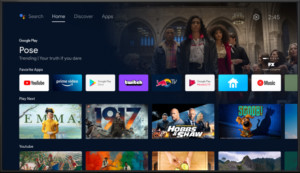How Long Has Television Been Around? A Journey Through TV History
The flickering images on our screens have become such a ubiquitous part of modern life that it’s hard to imagine a world without television. But how long has this captivating technology actually been around? From its humble beginnings as a mechanical curiosity to today’s sleek smart TVs, the journey of television is a fascinating tale of innovation and evolution. This article delves into the rich history of television, exploring its key milestones and the brilliant minds that brought it to life.
The Dawn of Television: Mechanical Marvels
The story of television begins long before the familiar electronic screens we know today. In the late 19th and early 20th centuries, inventors experimented with mechanical systems to transmit images. This era of “mechanical television” saw pioneering work by individuals like Paul Nipkow and John Logie Baird. Baird’s demonstration of a working television system in 1925, though crude by today’s standards, marked a significant breakthrough. However, mechanical television faced limitations in image quality and complexity, paving the way for a new era of electronic innovation.
The Electronic Revolution: Farnsworth’s Vision
The true revolution in television arrived with the invention of electronic television. Philo Farnsworth, a brilliant young inventor, developed the first fully electronic television system in the 1920s. His groundbreaking work utilized a cathode ray tube (CRT) to scan and display images, laying the foundation for all future television technology. Farnsworth’s invention marked a pivotal moment, transitioning television from a mechanical curiosity to a practical and viable medium.
The Rise of Color: A Vibrant Transformation
While the initial television broadcasts were in black and white, the dream of color television persisted. Early experiments with color systems date back to the early 20th century. However, it wasn’t until the mid-20th century that a commercially viable color television system emerged, thanks to the efforts of RCA Laboratories. The introduction of color broadcasting in the 1950s marked a significant leap forward, adding a new dimension to the viewing experience and forever changing the landscape of entertainment.
The Digital Age: Pixels and Beyond
The late 20th and early 21st centuries witnessed another transformative phase in television history: the digital revolution. Digital television, with its superior image and sound quality, replaced analog broadcasting as the global standard. This shift opened up new possibilities for interactive features, high-definition (HD) resolution, and ultimately, the emergence of smart TVs.
The Smart TV Era: Connected and Intelligent
Today, we live in the age of smart TVs, seamlessly integrating the internet and interactive features into our television experience. Smart TVs offer access to streaming services, apps, and a wealth of online content, blurring the lines between traditional television and the digital world. This latest evolution demonstrates the ongoing innovation in television technology, constantly adapting to meet the evolving needs and desires of viewers. From simple black and white images to the immersive world of smart TVs, the answer to “How Long Has Television Been Around?” reveals a remarkable journey of technological advancement and cultural impact.
Conclusion: The Ever-Evolving Story of Television
Television’s journey, spanning over a century, is a testament to human ingenuity and our enduring fascination with visual storytelling. From mechanical contraptions to the sophisticated smart TVs of today, the technology continues to evolve. As we look to the future, one thing remains certain: the story of television is far from over. New innovations and viewing experiences are sure to continue shaping the future of this captivating medium.








